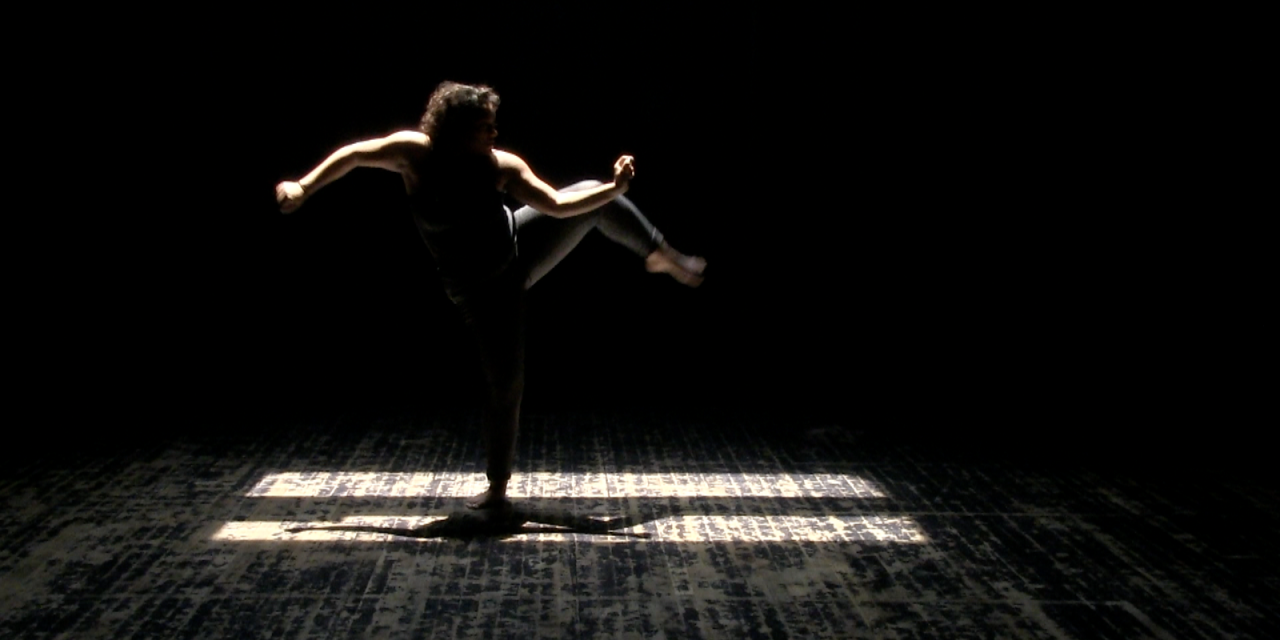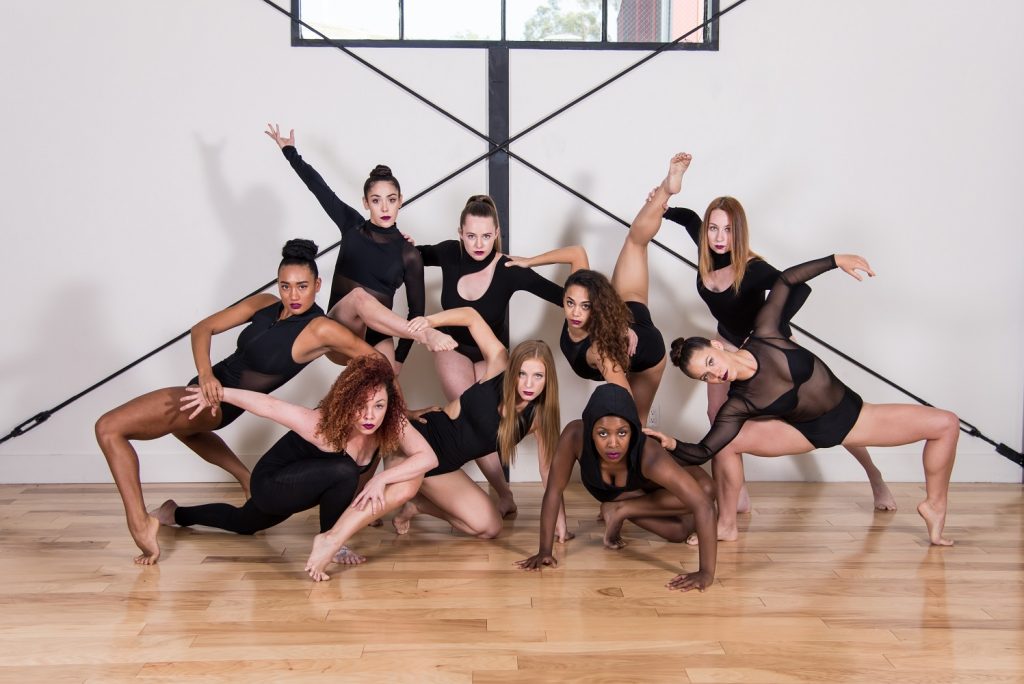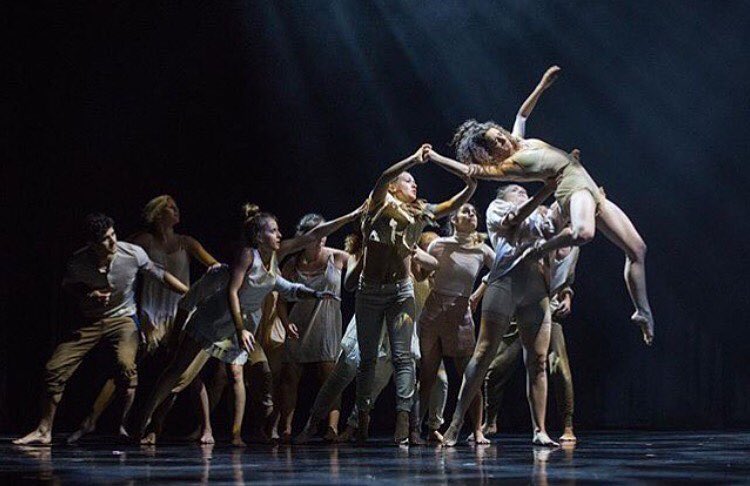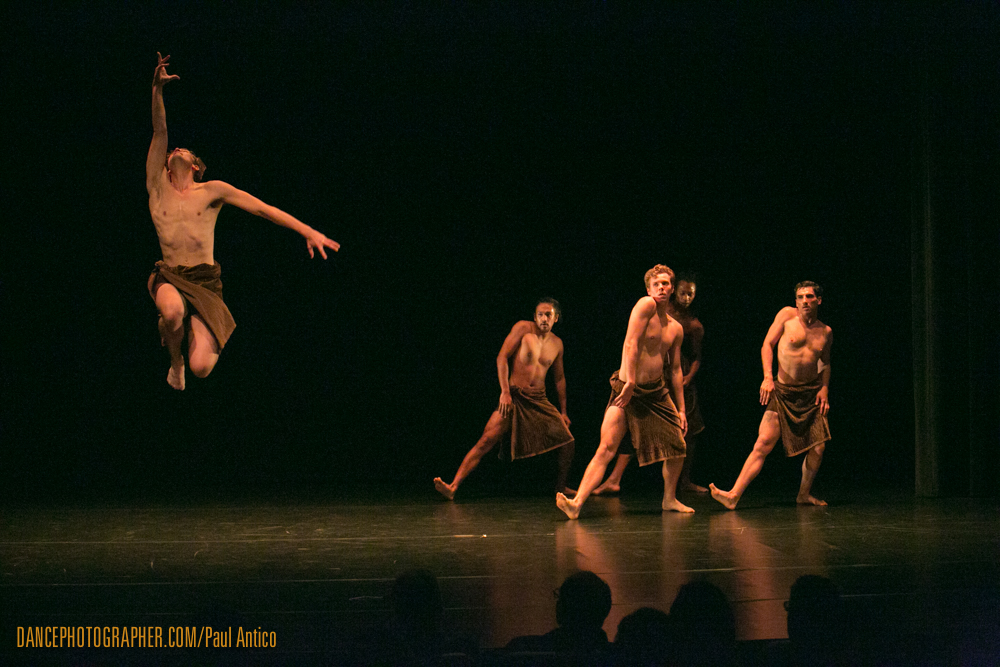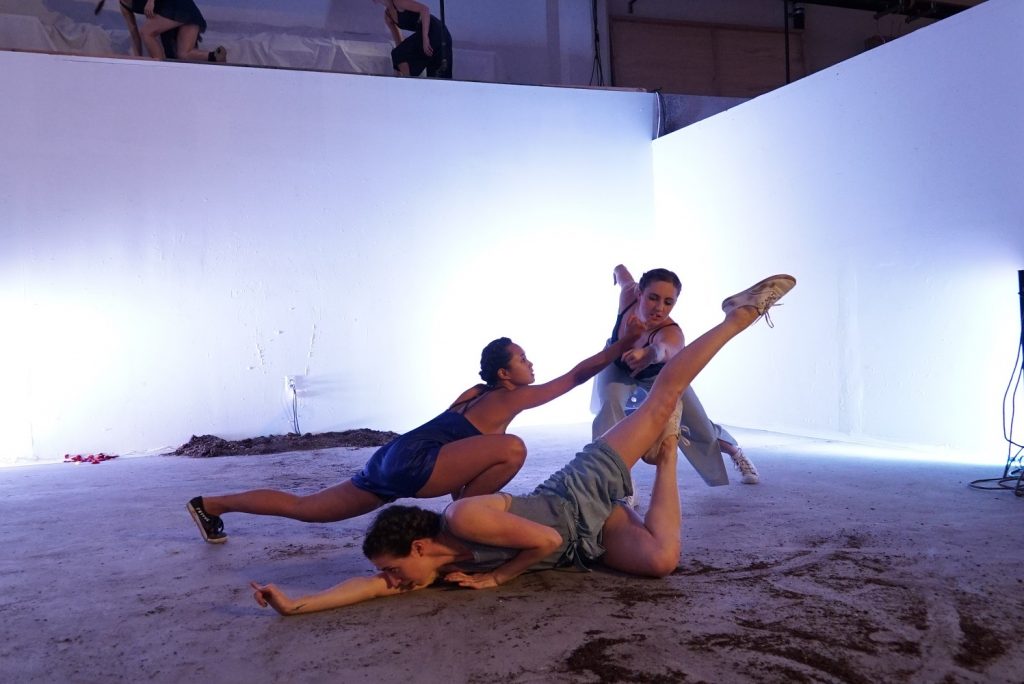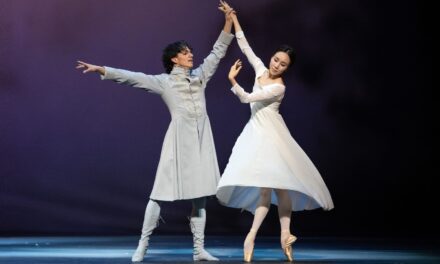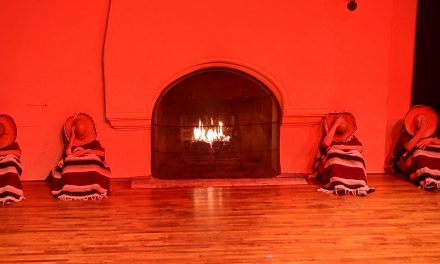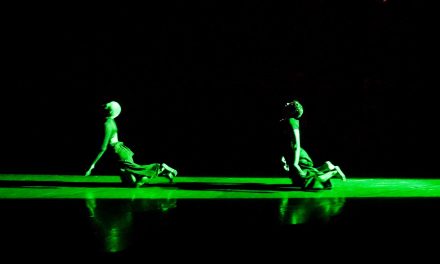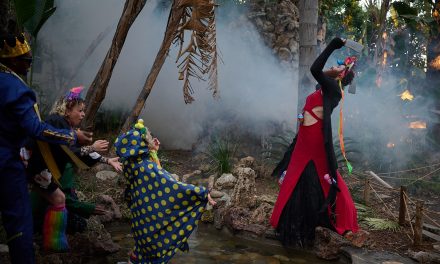After a month of performances and master classes in several venues, The Los Angeles Dance Festival’s Rise of the Female concluded with two nights at the Diavolo Performance Space. Entitled FRINGE, Producer Deborah Brockus created an opportunity for small companies and independent artists who work outside the mainstream of LA dance to present their work. Brockus is the founder and Artistic Director of BrockusRED, and remains one of the central driving forces behind LA Dance.
Overall, my criticism of the first night of FRINGE, is that several works appeared unfinished, incomplete or that they simply did not present or follow through with a coherent idea. All the works were wonderfully performed, and I greatly appreciate the work that went into creating each and every piece. That said, a few of these young choreographers need to look at their work with an objective eye and have someone they trust critique their work before putting it on the stage.
The Great Beyond took Brockus’ work into a new direction from what I have seen in recent years. This very short work utilized a large plastic tarp that covered the entire stage and small round lights spaced out over the area. Seven dancers were lined up across the front of the stage. One by one they began to slowly move across the space, traveling toward the far upstage right corner. The movement was quiet, ethereal and purposeful. These souls moved across the heavens and disappeared into another realm or black hole, dragging the lit universe behind them. It was a powerful statement of what might lie ahead for us all and of humankind’s continuing search for universal answers. The strong cast of BrockusRED included Cersha Burn, Leah Hamel, Moises Josue Michel, Julienne Mackey, Luciana Johnson, Dominique McDougal, and Rein Short.
La Luna Negra Cantina was a powerful work choreographed by Bryanna Brock with her dancers of Deep Blue. Inspired by siblings Kim and Clint Townsend, a family moves through different relationships with one another while dealing with Clint’s crippling diagnosis of ALS. One central figure, performed by the exquisite Hyosun Choi, seeks love and support throughout the dance. There are strong duets between Choi and Cody Potter, and a brief but memorable solo performed by Jamal Wade. Casey Gonzales acts as a catalyst between Choi’s character and the others. The work ends with all four seated at a table, with Choi unable to cope.
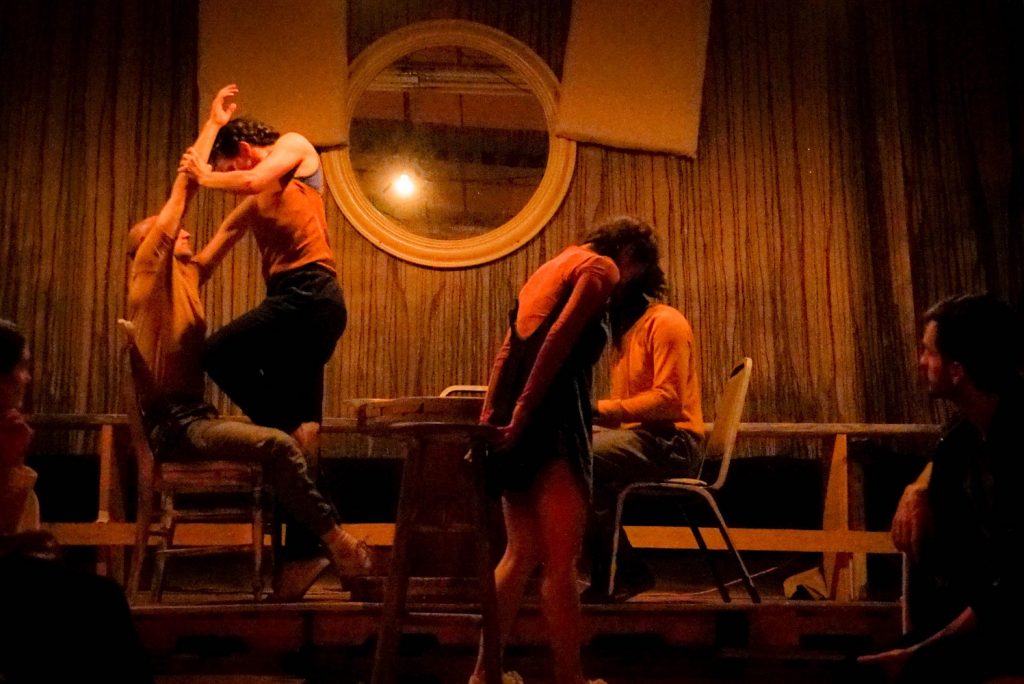
Deep Blue in La Luna Negra Cantina – dancers L to R Cody Potter, Casey Gonzales, Hyosun Choi, Jamal Wade – Photo by Becca Green
Raw is an appropriate title for the work choreographed and performed by Mallory Fabian, Artistic Director of the experimental dance company fabe. Fabian exposes the reality of accepting who we are, what we look like and choices we make. She is a strong and intense performer and this solo highlights all of those qualities.
Choreographer Victoria Brown is a co-founder of MashUp Contemporary Dance Company and the choreographer of From Another Point of View. This piece started out very strongly with two women, Emily Andrews and Nicole Hagen, dressed in identical costumes with grey tights, grey vest jackets and day-glow green halter tops. One presents a movement statement then the other reacts. I felt that this work was going to tackle two sides of one or more subjects, but it ended up going nowhere in particular. The choreography shifted into a showcase for the talents of Andrews and Hagen instead of completing its story.
I have seen and enjoyed other works by CATASTROPHE! Dance director Cat Cogliandro, but the work seen on this evening, Fever. Pitch. appeared to be the opening scene of a longer work. Performing to a song by Rainbow Kitten Surprise, the dancers smiled, mugged and lip synced through a series of musical visualizations that bordered on chaos. The performers who worked extremely well to make Cogliandro’s vision come together were Gina Menichino, Ashley Taylor Welch, Destynee Witzel, Mali Dea, and Hannah “Nighthawk” Hawkins.
When Ashes Fall is a lovely duet choreographed by Deborah Brockus for Moise Josue Michel and Julienne Mackey. Rose pedals form a romantic setting for these two characters to move from the joys of new love, through difficult times and into separation. More work needs to be done on the transitions in and out of some of the partnering, but overall this work is very enjoyable.
Charlie, Choreographed by Lea Hamel is sweet and well danced, but here, Hamel’s choreography has not risen to a professional level. Dominique McDougal is wonderful as a lip syncing drag queen, and there was strong performances by Ava Gordy, Julienne Mackey, Lyla Palmer, and Samantha Rose.
Brigette M. Dunn-Korpela has created a forceful excerpt of what promises to be a powerful work. Add Water & Stir (excerpt) examines the lives and situations of people of color in this country. A solitary figure, performed beautifully by Lainey Bowers, sits in a blood stained white chair, unable to face the outside world. She is dressed and ready but cannot rise to take that final step of leaving the security of her home. We see two women out of control with nervous laughter and two men struggling to survive. One haunting section is when these two perform to recorded text written and performed by Whitney Jackson and Joan Padeo, describing the battered face of Emmett Till lying in his open casket. Till was 14 years old when he was lynched in 1955 by several Mississippi white men for supposedly smiling at a white worman. The cast included B. Dunn Movement members Brance Souza, Kyreeana Breelin, Whitney Jackson, Lainey Bowers, and Alan Perez. The basic black costumes were by Hannah Lawton.
Once again, strong performances could not save Screaming Shapes choreographed by Sophia Stroller, the Artistic Director of Iris Company. Based on a poem by Nick Volpert “outlining his visceral response to the 2016 United States sociopolitical events, there were images of mass confusion, grotesque posturing and freeze frame captures of people headed to what felt like the destruction of time. Sadly, however, these images did solidify into a clear statement. The cast of Screaming Shapes was Bryanna Brook, Cody Brunelle-Potter, Hyosun Choi, Casey Gonzalez, Amanda Macleod, Shane Raiford, and Jamal Wade. Music was by composer Peter S. Shin who collaborated with Stroller on this work.
Kudos goes out to Technical Director and Lighting Designer Evan Nie and his Sound Technician Mike Grimm, who manage year after year to give each dance its own environment while working with very limited equipment. Deborah Brockus needs and deserves her own theater. She is one of several women in Los Angeles who continue to create, support, produce and finance dance.
Featured Photo: Mallory Fabian – fabe dance – Photo by Francesca Penzani
For more information about the Los Angeles Dance Festival, click here.
To View the LA Dance Chronicle Calendar of Performances, click here.

